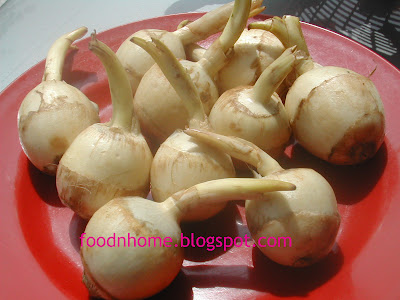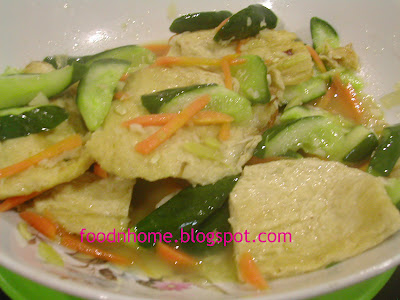
The kani salad is healthy and is very easy to prepare. There is no cooking involved as we are eating everything fresh. You just need to peel and shred the carrot and cucumber with a shredder.

In fact I just made a big bowl of Kani salad as my contribution towards the recent potluck get-together at my brother's house. The kani salad is best served, salad-bar style to preserve the freshness and individual preference.
Kani Salad

1 cucumber
1 carrot
5 crab sticks
1 small lettuce
1 pkt Kelloggs cornflakes
mayonaise

- Peel and shred the cucumber and carrot.
- Wash the lettuce and slice leaves to smaller pieces.
- Remove plastic wrappings and cut the crab sticks into thin strips.
- Place the cucumber, carrot, crab sticks and lettuce on a plate.
- Add the mayonaise.
- Sprinkle some cornflakes on top.
- Toss and serve.





















